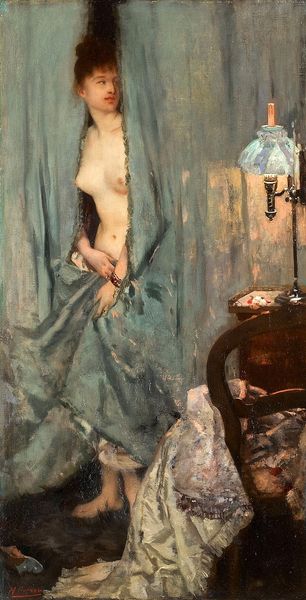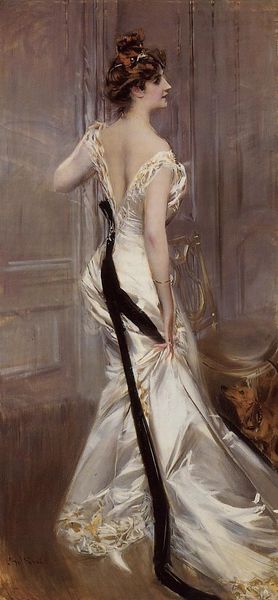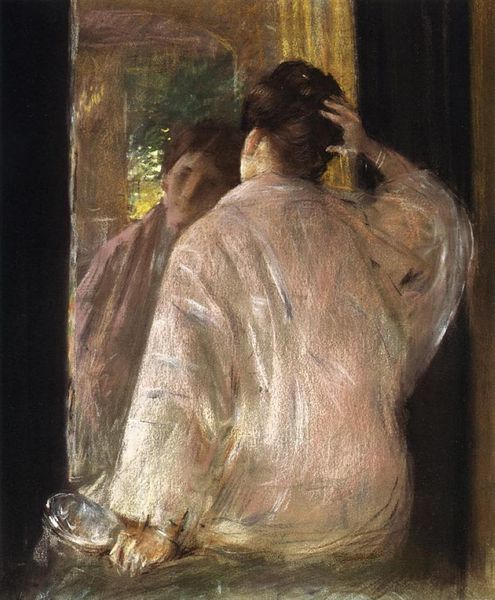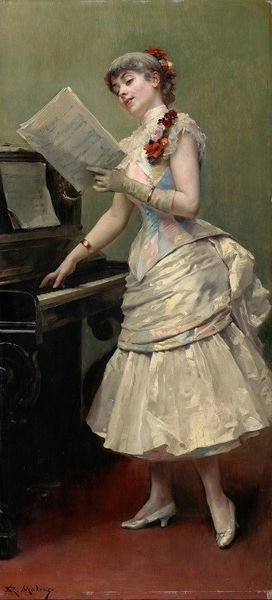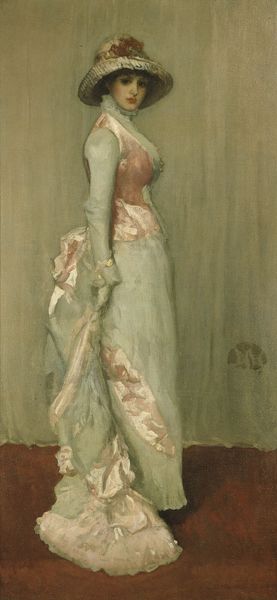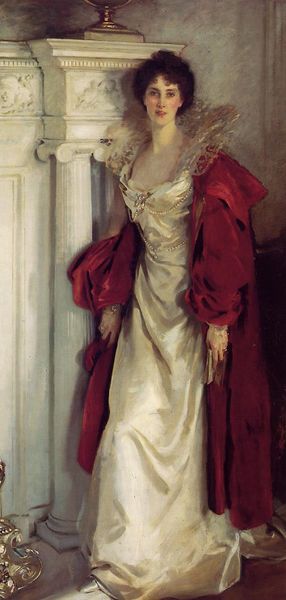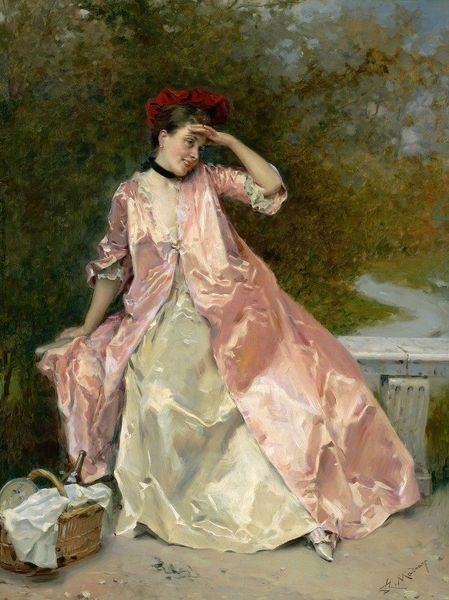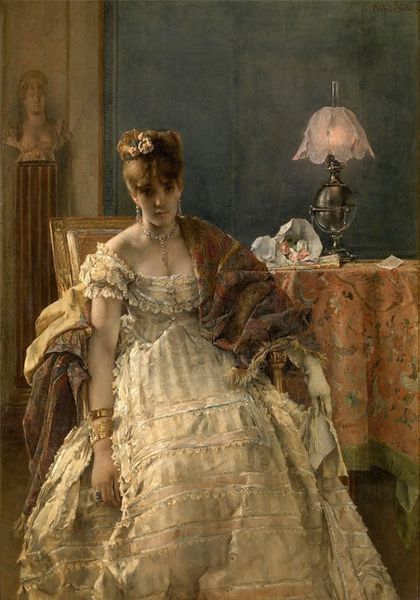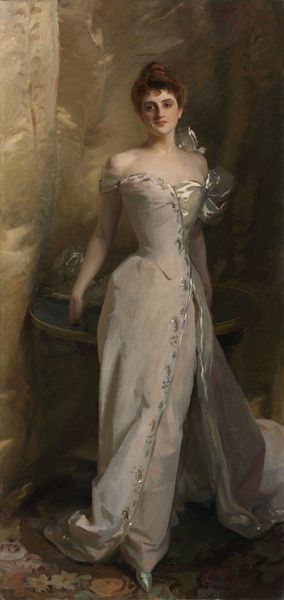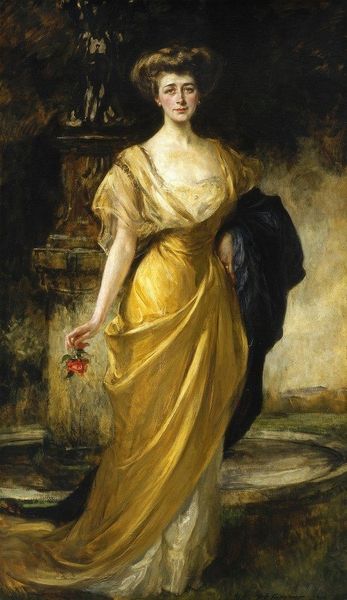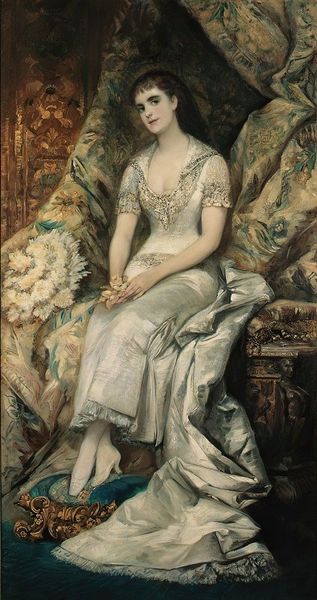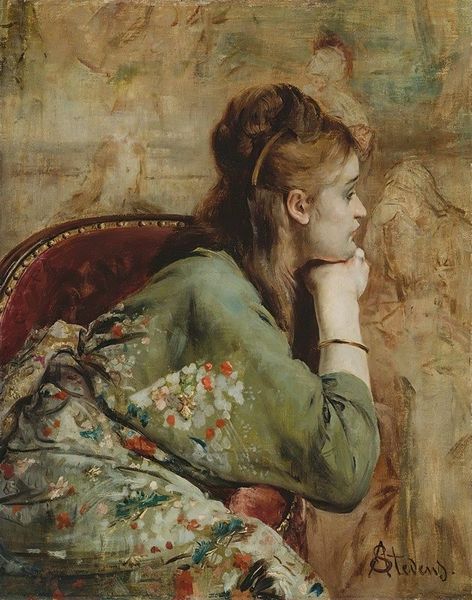
Copyright: Public domain
Curator: Algernon Talmage completed "The Mackerel Shawl" in 1910 using oil paint on canvas, offering an intimate glimpse into a woman's private moment of reflection. Editor: The immediate effect is melancholic—a study in silvery grays and muted golds, emphasizing introspection and a quiet stillness. Curator: Notice the compositional elements, especially the mirror. Mirrors often serve as symbolic portals—reflecting not just our outward appearance but also hinting at deeper psychological complexities, identity, or even vanity. The reflection creates a doubling effect, suggesting the layers of self. Editor: Exactly. And how the artist captures the texture of the shawl itself, the way the light glances across its surface – there's a beautiful tension between the precision of the brushstrokes defining the fabric and the softness of the overall impressionistic style. Curator: The title suggests a garment of unusual pattern and perhaps significance. A "mackerel shawl" could reference patterns reminiscent of fish scales, perhaps alluding to themes of transformation, adaptation, or even the fluidity of identity. In the historical context, such shawls were fashion accessories but also class signifiers. Editor: What fascinates me is how Talmage renders the fishbowl in the periphery. It's rendered with swift brushstrokes, almost abstract. What is the symbolism behind these enclosed animals and the symbolism between the figure that looks into the mirror. It suggests captivity and self reflection. Curator: It introduces the interplay of inner and outer worlds, private versus public presentation. There is also a continuity of form in the curve of the mirror, the bend of the shawl, the dome of the fishbowl – echoing throughout the canvas in these repeated forms. Editor: The painting makes you linger. It presents such careful control of tonality. It's technically remarkable in capturing a somber beauty. Curator: Absolutely. It is indeed a delicate observation of a woman at the turn of the century framed with material culture and its accompanying symbolism.
Comments
No comments
Be the first to comment and join the conversation on the ultimate creative platform.

